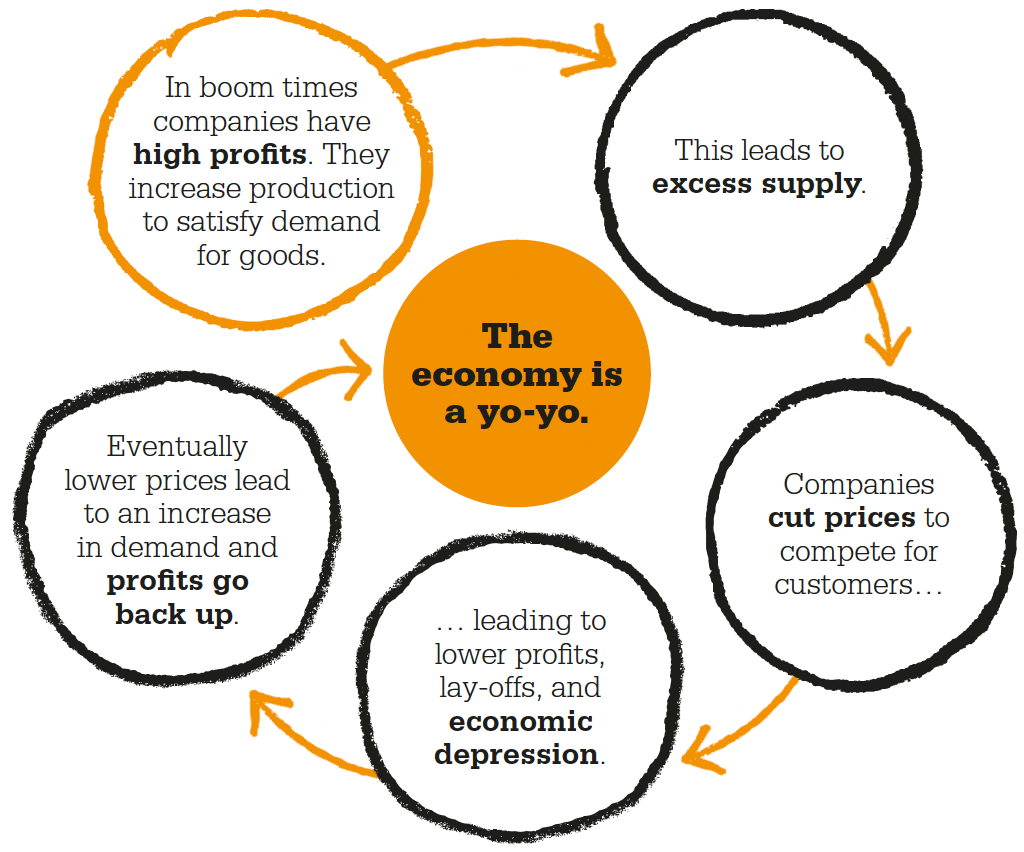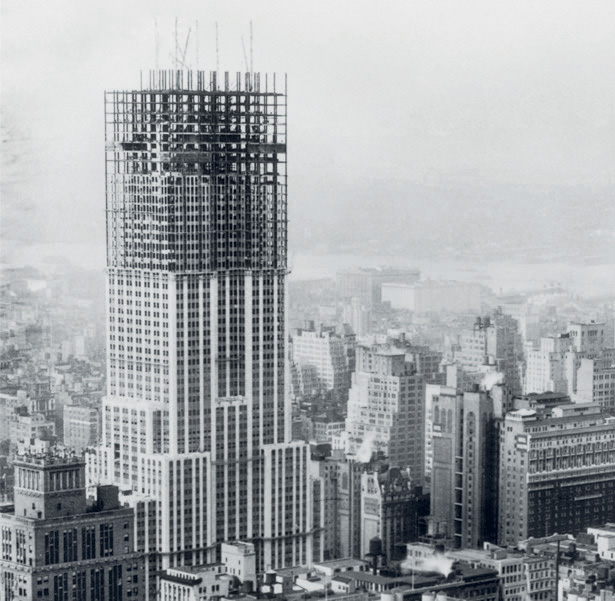

The macroeconomy
Jean-Charles Sismondi (1773–1842)
1776 Adam Smith argues that natural market forces create an economic equilibrium.
1803 Jean-Baptiste Say claims that the market will balance supply and demand naturally.
1817 Welsh social reformer Robert Owen identifies overproduction and underconsumption as causes of economic downturns.
1820s French economist Charles Dunoyer identifies the cyclical nature of the economy.
1936 John Maynard Keynes urges governments to spend in order to avoid economic fluctuations.
Business cycles are the shift between strong economic growth, described as a boom or expansion period, and periods of economic decline or stagnation. They are often referred to as cycles of boom and bust. The Swiss historian Jean-Charles Sismondi was the first to identify the occurrence of periodic economic crises, but it was the work of a later economist, the Frenchman Charles Dunoyer (1786–1862), who revealed their cyclical form. Sismondi challenged the “market knows best” orthodoxy of Adam Smith, Jean-Baptiste Say, and David Ricardo. They believed that if the market is left to its own devices, an economic equilibrium is quickly and easily achieved, leading to full employment. Sismondi thought a sort of equilibrium would eventually be reached, but only after a “frightful amount of suffering.”

Before Sismondi published his New Principles of Political Economy in 1819, economists had either overlooked short-term economic booms and busts or had attributed them to external events, such as war. Sismondi showed that short-term economic movements are due to the natural results of market forces—overproduction and underconsumption—caused by growing inequality during booms.
As economies grow and businesses do well, workers are able to demand wage increases and buy more of the goods they produce. This fuels the economy’s boom. As more and more goods are sold, companies expand, hiring more workers to produce more goods. The new workers then have money to buy goods, and the boom continues.
Competition means that all companies will increase production until supply outstrips demand, Sismondi argued. This forces companies to cut prices in order to attract customers, triggering falling profits, falling wages, and lay-offs among the workforce—in other words an economic crash followed by a recession. Companies begin to recover once prices become cheap enough to stimulate demand and credit becomes more available, starting the cycle all over again.
"Universal competition, or the effort to always produce more, and always at a lower price… has been a dangerous system."
Jean-Charles Sismondi
An early crisis that confirmed these economic cycles was the Panic of 1825. This stock-market crash was one of the first documented crises caused solely by internal economic events. It was precipitated by speculative investments in Poyais—a fictional country invented by a con man to attract investments—and the repercussions were felt in markets across the world.
Sismondi argued against the laissez-faire approach of Adam Smith and claimed that government intervention is necessary to regulate the progress of wealth and avoid these periodic crises.
The discovery of these cycles enabled economists to analyze the economy in a new way and to devise strategies for trying to avoid crashes and recessions. Keynes built on Sismondi’s and Dunoyer’s work to develop his own theories, which were to make up one of the world’s dominant economic approaches in the 20th century.

Skyscrapers are often built during times of excessive optimism, a sure sign that the economy is overheating. By the time they are finished, the economy has often crashed.
As whole economies grow and contract, markets within them rise and fall. Markets that show sustained price rises are sometimes known as bull markets; those in which prices are falling as bear markets. These labels are usually applied to assets such as shares, bonds, or houses. Bull markets—for example, a rising stock market—often occur during periods of economic growth. Investors become more optimistic about economic prospects and buy shares in companies, so fuelling rising asset values. As the economy falters, the process goes into reverse. Investors become “bearish” and start to sell assets as the market falls. US stocks were in a bull market in the 1990s with the dot-com boom. A major bear market took place during the Great Depression of the 1930s.